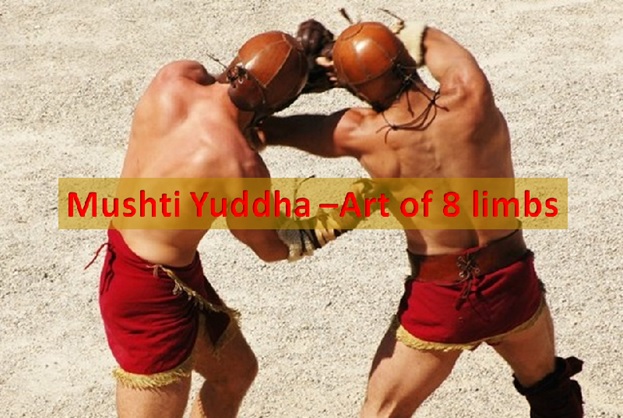
Musti Yuddha: “Art of Eight Limbs”
It is an unarmed martial art from Varanasi (Benares) in north India. It was almost went to extinction and now gaining importance. It is unarmed martial art from originated in this holy place.
In Varanasi, Musti-yuddha was not a sport, but a way to fight with the anti-social elements. Similar to Southeast Asian kickboxing styles it makes use of punches, kicks, knees and elbow strikes & head buttes although punches tend to dominate.
Matches were once held regularly in Varanasi but were eventually banned because of the fights which often broke out among the boxers’ supporters. Illegal bouts continued but became rare by the 1960s.
The additional thing which needs to meant here is that the training of Musti-yuddha is a spiritual training, as well as physical workout. Traditionally, the art of hand to hand combat in India was divided into two main categories: Musti-yuddha and Malla yuddha.
Sanskrit, mallayuddha literally translates to “boxing match”. Strictly speaking, the term denotes a single pugilistic encounter or prize-fight rather than a style or school of wrestling.
This art was known as the “art of eight limbs” as there are eight natural weapons to fight with: fists, elbows, knees and feet.
Technique used in this ancient martial art are punches, kicks, knees and elbow strikes. This style is a complete art of physical, mental and spiritual development.
.
.
Author: Sumana Rao | Posted on: May 12, 2017






















3 Comments on “Musti Yuddha: “Art of Eight Limbs””
Great article, I enjoy the martial arts of India! I like this lesser known martial art of India!
Thank you Jon!
Where can I learn mushti yuddha
Write a comment